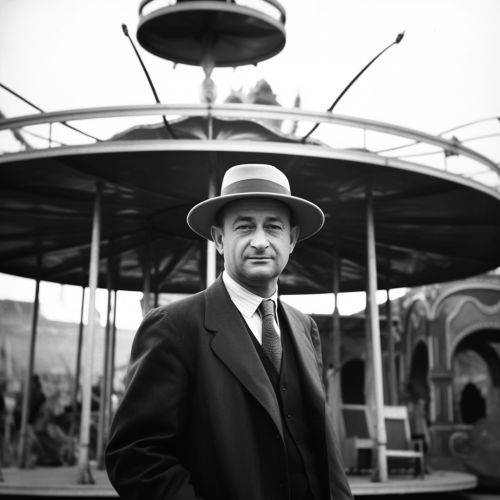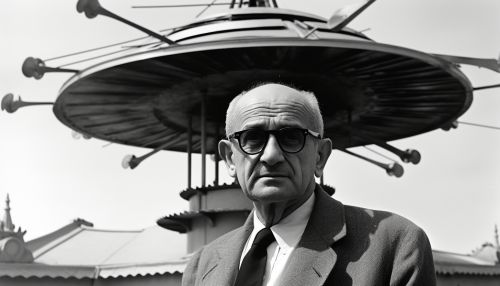Karl Jansky
Early Life and Education
Karl Guthe Jansky was born on October 22, 1905 in Norman, Oklahoma. His father, Cyril M. Jansky, was the dean of the College of Engineering at the University of Oklahoma. His mother, Nellie Moreau Jansky, was an instructor in mathematics. Karl was the third of four sons, all of whom would go on to have careers in science and engineering.
Jansky attended the University of Wisconsin, where he received his Bachelor of Science degree in physics in 1927. He continued his studies at the same institution, earning his Master of Science degree in 1928. His master's thesis, titled "The Propagation of Short Radio Waves", showed early signs of his interest in radio astronomy.
Career and Discoveries
After completing his education, Jansky joined the Bell Telephone Laboratories in Holmdel, New Jersey. Here, he was tasked with investigating sources of static that might interfere with radio telephone service. His research led him to construct a large, rotatable antenna, known as a "merry-go-round", that could receive radio waves at a frequency of 20.5 MHz.
In 1931, Jansky made a significant discovery. He identified three types of static: nearby thunderstorms, distant thunderstorms, and a faint steady hiss of unknown origin. He spent over a year investigating the third type of static. His research led him to conclude that the hiss was coming from outer space, and seemed to peak every 23 hours and 56 minutes. This is the period of the Earth's rotation relative to the stars, not the Sun, indicating an extraterrestrial source. This discovery marked the birth of radio astronomy.
Jansky published his findings in 1933 in the Proceedings of the Institute of Radio Engineers. Despite the significance of his discovery, it was largely ignored by the astronomy community, as it was believed that radio signals could not escape the Earth's atmosphere.
Legacy and Honors
Jansky's work laid the foundation for the field of radio astronomy. His discovery of cosmic radio waves was a significant contribution to our understanding of the universe. Despite the initial lack of recognition, his work was later acknowledged and celebrated.
In 1946, the unit used to measure the strength of radio sources, the jansky (Jy), was named in his honor. In 1960, the National Radio Astronomy Observatory inaugurated the Karl G. Jansky Very Large Array (VLA) in New Mexico, one of the world's premier astronomical radio observatories.
Jansky was inducted into the National Inventors Hall of Fame in 1973. In 1988, the American Astronomical Society established the Jansky Lectureship, an honor awarded annually to individuals who have made significant contributions to the field of radio astronomy.
Personal Life and Death
Jansky married Alice K. Green in 1932. They had three children: Cyril M. Jansky, Jr., who became a notable radio engineer; David Jansky, who became a physician; and Judith Jansky, who became a teacher.
Jansky died of a heart attack on February 14, 1950, at the age of 44. His premature death, likely exacerbated by the stress of his research, prevented him from witnessing the full impact of his groundbreaking work.
See Also


